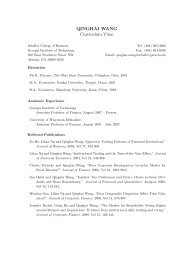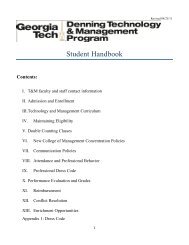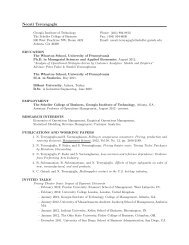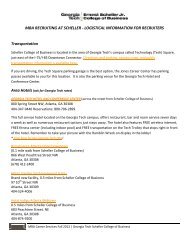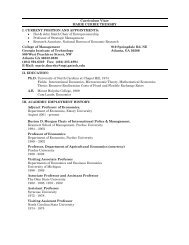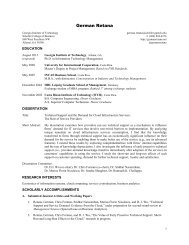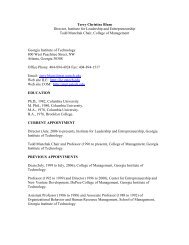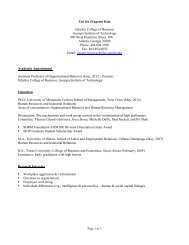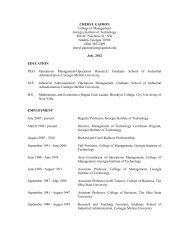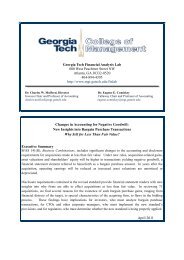Mars-Venus Marriages: Culture and Cross-Border M&A
Mars-Venus Marriages: Culture and Cross-Border M&A
Mars-Venus Marriages: Culture and Cross-Border M&A
Create successful ePaper yourself
Turn your PDF publications into a flip-book with our unique Google optimized e-Paper software.
This paper st<strong>and</strong>s at the confluence of at least two distinct bodies of literature – that on<br />
mergers <strong>and</strong> acquisitions, particularly transnational M&A, <strong>and</strong> that on culture, or more<br />
specifically, on cross-national cultural differences.<br />
Our study contributes to the evidence on the impact of culture on business activity, an<br />
issue that has been discussed often in the international business literature, <strong>and</strong> to some extent<br />
in the finance literature where it is a relatively new entrant 6 . Given the difficulties involved in<br />
defining <strong>and</strong> measuring culture, a few alternative measures have emerged in recent years. We<br />
use the measure that is, by far, the most established in the international business literature –<br />
national scores along all the different dimensions of culture developed by Geert Hofstede in<br />
his seminal 1980 work, <strong>Culture</strong>’s Consequences: International Differences in Work Related<br />
Values. Hofstede assigned survey-based scores to several countries on four orthogonal<br />
dimensions he defined – individualism, power distance, uncertainty avoidance <strong>and</strong><br />
masculinity – to arrive at his measure. 7 Fern<strong>and</strong>ez et al (1997, pp. 43-44) call the Hofstede<br />
framework “a watershed conceptual foundation for many subsequent cross-national research<br />
endeavors.” Kirkman et al (2006) provide an exhaustive survey of the literature spanning<br />
several sub-disciplines of management that has emerged since the publication of Hofstede’s<br />
book. They point out that Hofstede dimensions have become the st<strong>and</strong>ard tool for calibrating<br />
cultural differences in several business disciplines like marketing (e.g., Deshp<strong>and</strong>e, Farley,<br />
<strong>and</strong> Webster, 1997), management (e.g., Kogut <strong>and</strong> Singh, 1988), organizational development<br />
(e.g., Adler <strong>and</strong> Bartholomew, 1992), accounting (e.g., Cohen, Pant, <strong>and</strong> Sharp, 1993),<br />
business ethics (e.g., Armstrong, 1996) <strong>and</strong> information decision science (Bryan, McLean,<br />
6<br />
Stulz <strong>and</strong> Williamson (2003) argue that the culture of a country, as reflected in its religion<br />
<strong>and</strong> language, has a greater role to play in determining creditor rights than the origin of a country’s<br />
legal system. Guiso, Sapienza, <strong>and</strong> Zingales (GSZ) (2004) show that the trust that people of a country<br />
have in a citizen of another country plays a significant role in economic exchange between the two<br />
nations. Other recent papers in the finance area that have used the Hofstede metric include Chui,<br />
Titman <strong>and</strong> Wei (2005) who show that stock markets in individualistic countries have more active<br />
trading <strong>and</strong> momentum in stock returns <strong>and</strong> Licht, Goldschmidt <strong>and</strong> Schwartz (2003) who use Hofstede<br />
distances to show the heterogeneity within the broad groups used by LLSV (1998) to characterize<br />
corporate governance systems.<br />
7<br />
A fifth dimension, long term orientation, was later added, for a small subset of countries. The<br />
four original dimensions are traditionally used to calculate the cultural distance (see Kirkman et al<br />
(2006)).<br />
6



